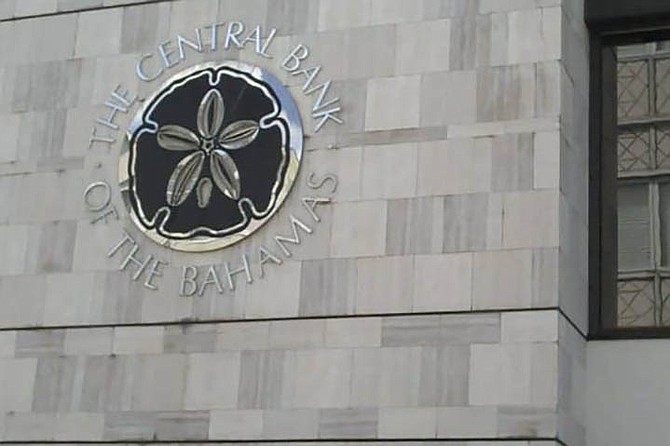By NEIL HARTNELL
Tribune Business Editor
nhartnell@tribunemedia.net
Large Nassau/Paradise Island hotels enjoyed a 25 percent “revenue boost” for the first nine months of 2019 as Hurricane Dorian only had minimal impact on its September performance.
The Central Bank of The Bahamas, unveiling its report on economic developments for that month and the third quarter, said room nights sold for the first nine months of 2019 were up 16 percent compared to the same period the year before while average daily room rates (ADRs) were ahead by 7.8 percent at $265.05.
Average occupancy rates for the year to end-September stood at 72 percent, with Hurricane Dorian only slightly blunting the resort sector’s performance over the eight months prior to its devastation of Abaco and Grand Bahama.
“Data from The Bahamas Hotel & Tourism Association (BHTA) and the Ministry of Tourism for a sample of large hotels in New Providence and Paradise Island confirmed a deterioration in hotel sector performance for the month of September,” the Central Bank report said.
“The average occupancy rate eased by one percentage point to 36.5 percent, amid a one percent fall-off in room nights sold. Nevertheless, the average daily room rate (ADR) edged up by 0.6 percent to $167.39. However, New Providence’s room revenue was flat during the month...
“Conversely, in the nine months to September expansion remained evident, with surveyed large properties in New Providence experiencing a revenue boost of 25 percent. The average occupancy rate rose by 8.5 percentage points to 72 percent, while the number of room nights sold moved higher by 16.0 percent and the ADR appreciated by 7.8 percent to $265.05.”
The Central Bank said the Bahamian tourism industry’s year-to-date performance had been largely “buttressed” against Dorian’s impact by its strong first-half showing, although the effects were more noticeable in the vacation rental market.
“The storm’s impact on capacity in the short-term rental market was also evident in AirDNA estimates for September,” it added. “In particular, the number of total available listings contracted by approximately 19.9 percent month-on- month, outdistancing the 2.8 percent fall-off during the same month of 2018 owing to broad-based declines across major markets.
“Further, when combined with seasonal patterns this was also accompanied by a reduction in bookings for the month. In terms of pricing, both hotel comparable and entire place listings posted declines in their average daily room rate (ADR) of 4.7 percent to $142.11 and 14.2 percent to $337.88, respectively.
“On a year-to-date basis available rental listings grew by 17.1 percent, with an increase in properties for both entire place and private room offerings. Likewise, bookings were 31.7 percent higher over the same period in 2018, reflecting improvements across all major markets but with lower average prices for both hotel comparable (7.3 percent ) and entire place accommodations (2.4 percent).”
Not surprisingly, tourism arrivals were also impacted by Dorian during September. “The most recent data from the Ministry of Tourism revealed that total visitor arrivals contracted by 12.8 percent in September following a 62.4 percent surge during the same period last year, when the Baha Mar properties’ capacity boost settled-in,” the Central Bank said.
“By port of entry, the high value-added air component fell by 14.7 percent reversing 2018’s 48.7 percent strengthening. Likewise, the sea segment retreated by 12.4 percent in a turnaround from a 65.3 percent expansion in the prior year.”
The Central Bank added: “Reflecting the impact of Hurricane Dorian’s passage in early September, data provided by the Nassau Airport Development Company (NAD) showed a 9.2 percent contraction in departures of foreign persons, sharply contrasting with the 42.3 percent increase secured during the same period last year.
“Specifically, growth in the dominant US segment tapered to 9.2 percent from the prior year’s 44.7 percent expansion, while traffic by non-US international passengers was reduced by 8.9 percent vis-à-vis last year’s 30.5 percent strengthening.
“Underpinned by improvements in earlier months, total foreign departures expanded by 15.2 percent during the nine-months to September, extending a 13.4 percent growth recorded over the same period of 2018. US departures rose by 16.6 percent compared to a 12.7 percent advance a year earlier. However, the growth in the non-US international component slowed to 7 percent from 17.8 percent.”
As for the banking industry’s ‘bad loan’ woes, the Central Bank said: “Over the first nine months of 2019, total private sector loan arrears declined by $60.2m (7.4 percent). The ratio of arrears to total loans fell by 1.1 percentage points to 13.2 percent.
“Short-term arrears narrowed by $21.7m (7.4 percent), and the related ratio by 38 basis points to 4.8 percent. Non-performing loans decreased by $38.4m (7.4 percent), and the non-performing loan rate by 67 basis points to 8.4 percent.”
The Central Bank added that mortgage loan arrears fell by $42.7m during the nine months to end-September 2019, with commercial/business loan arrears down by $15.4m and that for consumer loans dropping by just $2.1m.





Comments
Use the comment form below to begin a discussion about this content.
Sign in to comment
Or login with:
OpenID